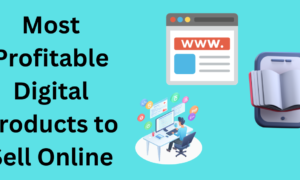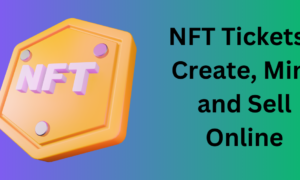Launching an online business has become remarkably more accessible in the modern era. Yet, this convenience has led to a surge in competition. The internet is inundated with many enterprises competing for the same pool of consumers. This saturation poses a formidable obstacle for entrepreneurs to establish their unique presence and flourish in the digital realm.
Standing out from the crowd and capturing customers’ loyalty in this sea of options is no small feat. Thus, while the digital landscape offers unparalleled opportunities for business ventures, navigating the dense competition demands innovative strategies and a keen understanding of market dynamics.
Table of Contents
2. The Importance of Business Differentiation
2.1 Standing Out Amidst the Crowd
In a competitive market, business differentiation is paramount to achieving success. Setting oneself apart from the crowd is essential for capturing the interest of prospective customers and forging a distinct identity within the marketplace. Without differentiation, businesses risk blending into the background noise of competitors, making it challenging to attract attention or garner customer loyalty.
Whether through innovative products, exceptional customer service, or unique branding, finding ways to stand out enables businesses to carve their niche and resonate with their target audience. By emphasizing what makes them unique, companies can create a compelling value proposition that sets them apart from the competition and enhances their chances of success in a crowded market.
2.2 Building Brand Identity
Building a robust brand identity extends beyond designing an eye-catching logo or crafting a memorable slogan. It encompasses deliberately cultivating a distinct personality and voice that profoundly connects with the intended audience. A strong brand identity reflects the business’s values, mission, and culture, evoking emotions and building consumer trust.
By developing a cohesive brand persona across various touchpoints, companies can foster a sense of familiarity and loyalty among their target demographic. This involves consistent messaging, visual aesthetics, and a tone of communication that resonates authentically with the audience. Ultimately, a well-defined brand identity is a powerful tool for differentiation in a competitive market, allowing businesses to stand out and forge lasting connections with their customers.
3. Leveraging Innovation
3.1 Embracing Emerging Technologies
Innovation serves as a cornerstone for business differentiation in a crowded marketplace. By embracing emerging technologies, you open doors to pioneering solutions and experiences that captivate consumers’ attention. Whether through groundbreaking products, streamlined processes, or enhanced customer experiences, staying at the forefront of innovation enables you to offer unique value propositions that differentiate your brand.
Embracing new technologies demonstrates your adaptability and forward-thinking approach and positions your business as a leader in its field. By continuously exploring and integrating innovative solutions into your operations, you can stay ahead of the curve and maintain a competitive edge, ultimately fostering customer loyalty and driving long-term success.
3.2 R&D Investment
Allocating resources to research and development (R&D) is instrumental in maintaining a competitive edge by keeping your business ahead of industry trends. Through R&D investment, you can continually enhance your products or services, ensuring they remain relevant and meet evolving consumer needs. You can uncover innovative solutions that set your offerings apart by exploring new technologies, methodologies, and market insights.
Moreover, R&D enables you to anticipate future demands and proactively address challenges, positioning your business as a trailblazer and for business differentiation. Whether developing cutting-edge features, improving efficiency, or expanding your product line, ongoing investment in R&D fosters a culture of innovation. It drives sustainable growth, allowing your business to thrive in an ever-changing marketplace.
4. Personalization: Tailoring the Experience
4.1 Understanding Customer Needs
Personalization is the art of catering to individual customers by comprehending their unique preferences, behaviors, and pain points. By delving into these aspects, businesses can create tailored experiences that resonate profoundly with their audience. This entails going beyond surface-level interactions and crafting customized solutions that address specific needs and desires. Personalization fosters a deeper connection between the brand and the customer, increasing satisfaction and loyalty, and is important for business differentiation.
Whether through personalized recommendations, targeted messaging, or customized product offerings, businesses can demonstrate attentiveness and empathy, ultimately enhancing the overall customer experience. By prioritizing personalization, companies can forge lasting relationships with their clientele, driving engagement and business differentiation in a competitive marketplace.
4.2 Customization and Adaptation
Providing customizable solutions and being receptive to customer feedback is integral to fostering a sense of ownership and loyalty among clientele. When customers have the opportunity to personalize their experience, whether it’s tailoring a product to their specific needs or adjusting services to suit their preferences, they feel a deeper connection to the brand. Additionally, actively listening to and implementing customer feedback demonstrates a commitment to meeting their evolving needs and desires.
This responsiveness cultivates trust and loyalty, as customers recognize their input is valued and acted upon. By offering flexibility and continuously refining offerings based on customer insights, businesses empower their clientele to feel invested in the brand’s success, resulting in long-term relationships and advocacy within the market.
5. Content Marketing: Crafting Compelling Narratives
5.1 Storytelling
Storytelling is a powerful tool for connecting with your audience on a deeper emotional level, enhancing brand memorability and relatability. You can create a meaningful connection that transcends transactional interactions by weaving narratives that resonate with your audience’s experiences, values, and aspirations. Compelling storytelling taps into human emotions, evoking empathy, joy, or nostalgia, fostering a sense of resonance and authenticity.
When consumers feel emotionally engaged with a brand’s story, they are more likely to remember it and form positive associations. Moreover, storytelling humanizes the brand, making it more relatable and accessible to consumers. Whether through advertisements, social media posts, or content marketing campaigns, leveraging storytelling allows businesses to leave a lasting impression and build stronger, more meaningful relationships with their audience.
5.2 Educational Content
Offering valuable educational content is a cornerstone for establishing authority within your industry and cultivating trust with potential customers. By sharing insights, expertise, and knowledge relevant to your field, you position yourself as a credible source of information and guidance. This demonstrates your proficiency and authority and showcases your commitment to helping others succeed. As consumers engage with your educational content, they recognize your brand as a trusted advisor, increasing confidence in your products or services.
Moreover, educational content empowers consumers by providing valuable resources to make informed decisions, further strengthening their trust in your brand. By consistently delivering high-quality educational content, you build brand loyalty and foster long-term relationships with your audience based on mutual respect and shared value.
6. Social Proof and Reviews
6.1 Harnessing the Power of Social Proof
Social proof, including customer reviews and testimonials, acts as a compelling form of validation for your brand, instilling confidence in potential buyers. When prospective customers see positive feedback from satisfied clients, it reassures them of the quality and reliability of your products or services. Reviews and testimonials provide real-life experiences and opinions, offering valuable insights into what others have experienced with your brand.
This validation not only helps alleviate any doubts or concerns but also builds trust and credibility. Additionally, social proof can influence purchasing decisions by showcasing the positive experiences of others, serving as a persuasive tool in the buyer’s journey. By leveraging social proof effectively, you can enhance your brand’s reputation and attract new customers who are more likely to convert based on the endorsements of their peers.
6.2 Encouraging User-Generated Content
Encouraging customers to share their experiences through user-generated content is a powerful strategy for fostering a sense of community around your brand and expanding your reach. When customers share their experiences through reviews, social media posts, or testimonials, they become advocates for your brand, amplifying your message to their networks. This increases visibility and creates a sense of belonging among customers, as they feel part of a community that shares common interests and values.
User-generated content adds authenticity and credibility to your brand, reflecting genuine customer experiences and opinions. Furthermore, by showcasing user-generated content, you demonstrate appreciation for your customers’ contributions, further strengthening their loyalty and engagement. Fostering a community of brand advocates through user-generated content can significantly enhance brand awareness, trust, and affinity among your target audience.
7. Omni-channel Presence
7.1 Seamless Integration
Maintaining a consistent presence across various channels, such as social media, email, and offline touchpoints, is essential for keeping your brand at the forefront of consumers’ minds. Engaging with customers across multiple platforms increases the likelihood of reaching them at different stages of their journey and in various contexts. Consistency in messaging, branding, and communication reinforces your brand identity and recall.
Customers who interact with your brand on social media, receive an email newsletter, or encounter your brand offline should experience a cohesive and recognizable presence. This consistent omni-channel approach enhances brand visibility and fosters trust and loyalty over time. By being present where your audience is and delivering a unified brand experience, you can effectively nurture relationships and stay competitive in today’s dynamic marketplace.
7.2 Unified Brand Experience
Delivering a seamless and cohesive experience across all channels reinforces your brand’s identity and fosters customer loyalty. When customers encounter consistent messaging, branding, and service quality across various touchpoints, it enhances the image and values of your brand in their minds. This consistency builds trust and reliability, as customers know what to expect regardless of how they interact with your brand.
Moreover, a unified experience demonstrates that your brand understands and values customers’ preferences and needs, enhancing loyalty. Whether a customer engages with your brand online, in-store, or through other channels, they should receive a consistent and cohesive experience that reflects your brand’s promise and values. By prioritizing consistency across all touchpoints, you strengthen your brand’s identity and cultivate long-lasting relationships with your customers based on trust and satisfaction.
8. Conclusion: Paving the Path to Success
In today’s saturated online marketplace, achieving success hinges on implementing innovative strategies and emphasizing differentiation. By embracing emerging technologies, businesses can offer unique solutions that stand out amidst competitors, capturing consumers’ attention. Personalization further enhances this by tailoring experiences to individual preferences, fostering stronger connections and loyalty. Crafting compelling narratives adds depth to your brand, resonating with audiences emotionally and making your business more memorable.
Maintaining an omnichannel presence also ensures consistent visibility and accessibility across various platforms, maximizing reach and engagement. By combining these approaches, businesses can carve out a distinct niche, effectively positioning themselves for success in a crowded market. This multifaceted approach not only sets your brand apart but also enables you to thrive and flourish amidst intense competition, ultimately maximizing your business’s value and impact.
9. FAQs (Frequently Asked Questions)
Q1: How can I differentiate my online business without breaking the bank?
A1: There are several cost-effective ways to differentiate your business, such as focusing on niche markets, leveraging social media platforms, and investing in content marketing.
Q2: What role does customer feedback play in differentiation strategies?
A2: Customer feedback is invaluable for refining your offerings and tailoring them to meet your target audience’s evolving needs and preferences.
Q3: How important is keeping up with emerging technologies in a crowded market?
A3: Staying abreast of emerging technologies is crucial for maintaining a competitive edge and offering innovative solutions that set your business apart.
Q4: How can I measure the effectiveness of my differentiation strategies?
A4: Key performance indicators (KPIs) such as customer satisfaction, brand recognition, and market share can help gauge the effectiveness of your differentiation efforts.
Q5: What steps can I take to innovate and stay ahead of the competition continuously?
A5: Investing in research and development, fostering a culture of creativity and experimentation, and closely monitoring industry trends is essential for continuous innovation and staying ahead of the curve.



























